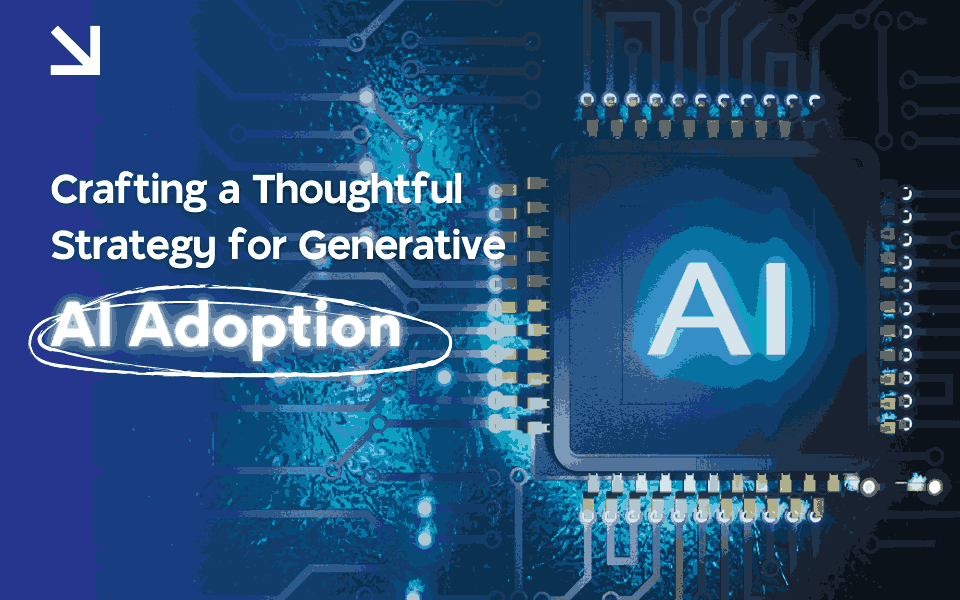Posted on on October 24, 2024 | by XLNC Team

Generative artificial intelligence (AI) and conversational user experience (UX) dominate discussions across industries today. These technologies are reshaping how we work, from news articles and social media posts to team meetings in the metaverse. As per a recent survey by McKinsey, generative AI has gained widespread attention among professionals across various regions, industries, and seniority levels. 79% of respondents report some exposure to Gen AI, whether at work or in their personal lives, while 22% use it regularly in their jobs. Usage rates are comparable across seniority levels, with the highest adoption found among those in the technology sector and North America. However, according to Gartner, Inc., at least 30% of GenAI projects will be abandoned after the proof-of-concept stage by 2025 due to issues such as poor data quality, insufficient risk controls, rising costs, or unclear business value. When implemented effectively, generative AI can enhance employee experiences, maximize productivity, and maintain the security of enterprise data. Well, to unlock the full potential of these technologies, enterprises must carefully plan their introduction and implementation. Generative AI is revolutionizing industries, transforming how businesses operate and interact with technology. Organizations worldwide are exploring AI adoption to enhance workflows, automate tasks, and improve decision-making. However, companies must develop a structured approach that aligns with business objectives and safeguards data integrity to utilize AI technology fully. Businesses are increasingly investing in generative AI applications due to their ability to streamline processes, drive innovation, and optimize productivity. Whether automating content creation, enhancing customer interactions, or personalizing experiences, enterprises are adopting AI for business operations to stay ahead in competitive markets. Additionally, advancements in generative AI models are enabling more sophisticated use cases, from predictive analytics to creative design. The integration of AI automation offers enterprises several advantages, including: Increased efficiency by automating repetitive tasks Enhanced decision-making through data-driven insights Improved customer experiences with personalized interactions Cost savings by optimizing resource allocation Strengthened security with intelligent risk detection A structured AI strategy is essential for successful implementation. Businesses risk inefficiencies, security vulnerabilities, and low adoption rates without a clear roadmap. A well-defined strategy ensures that generative AI aligns with company goals, supports compliance, and maximizes return on investment. While the potential of AI generative models is immense, organizations often face roadblocks such as: Data quality issues affecting AI performance Regulatory concerns around data privacy High implementation costs and resource constraints Workforce resistance due to unfamiliarity with AI tools Improperly deployed AI technology can lead to operational inefficiencies, security breaches, and ethical concerns. A scarcity of risk management can result in financial losses and reputational damage. Therefore, organizations must establish governance frameworks to ensure responsible AI use. Successful adoption of generative AI and UX technology requires thoughtful preparation. Organizations must evaluate existing business processes and workflows to understand how employees interact with productivity applications. Key stakeholders should play an integral role in determining how to best leverage these powerful capabilities. This ensures that the technologies are not misused and that sensitive information remains protected. Here are three critical steps enterprises should take when creating a plan for implementing generative AI: Establishing a clear AI policy is essential to guiding the use of generative AI within the organization. This policy should outline the appropriate use of AI technologies, ethical considerations, and guidelines for managing data privacy and security. Security must be a top priority when deploying any generative AI technology. Organizations should implement measures to safeguard sensitive data and ensure compliance with regulations. This includes regular audits, training employees on data protection best practices, and utilizing secure AI platforms. The success of generative AI implementation is intrinsically linked to the workforce experience. An effective change management and communication plan is vital. This plan should articulate the vision for change, prepare the organization for the transition, and empower employees to embrace the new technologies. It should also outline how the change will be managed over time, including ongoing support and training for end users. To evaluate the effectiveness of AI for business, companies must establish key performance indicators (KPIs) such as efficiency gains, user satisfaction, and cost reductions. Continuous monitoring and iterative improvements help refine AI applications and drive long-term success. Global systems integrators will be crucial in guiding organisations on their generative AI and conversational UX journey. Given that many employees may be unfamiliar with conversational UX, it's essential to measure their experiences with natural language interfaces. Organisations should capture employee sentiment and workforce perception data to gain insights into the effectiveness of these technologies. Analysing this data alongside service volumetrics provides objective measurements of employee experience, helping companies make informed decisions about their AI implementations. At XLNC Technologies, we help organizations navigate the complexities of AI adoption with tailored solutions that align with business needs. Our expertise in generative AI enables companies to use the full potential of this transformative technology while ensuring security, compliance, and efficiency. With strategic guidance, robust AI automation, and a commitment to continuous improvement, XLNC empowers businesses to thrive in the AI-driven era. As generative AI and conversational UX continue to evolve, organizations must be strategic and responsible in their implementation. By crafting a comprehensive plan that defines policies, promotes security, and manages change, enterprises can create a positive employee experience while harnessing the power of these groundbreaking technologies. The journey may be complex, but with the right approach and the support of global systems integrators, companies can unlock the full potential of generative AI, paving the way for a more productive and secure future.Understanding Generative AI Adoption
Why Businesses are Investing in Generative AI
Key Benefits of Generative AI for Enterprises
Why a Well-Defined Strategy is Crucial
Common Challenges in Generative AI Adoption
The Risks of Poor Implementation
Crafting a Flight Plan
Define an Enterprise AI Policy
Promote security, privacy, and compliance.
Manage Change Effectively
Measuring Success and Continuous Improvement
The Role of Global Systems Integrators
How XLNC Empowers Businesses with Generative AI
Conclusion
Comments